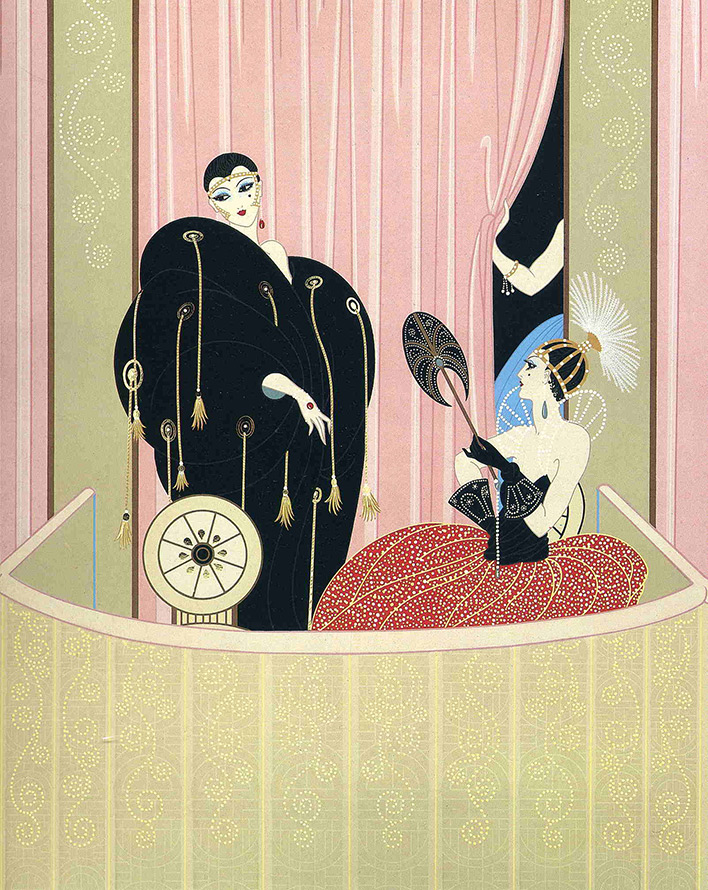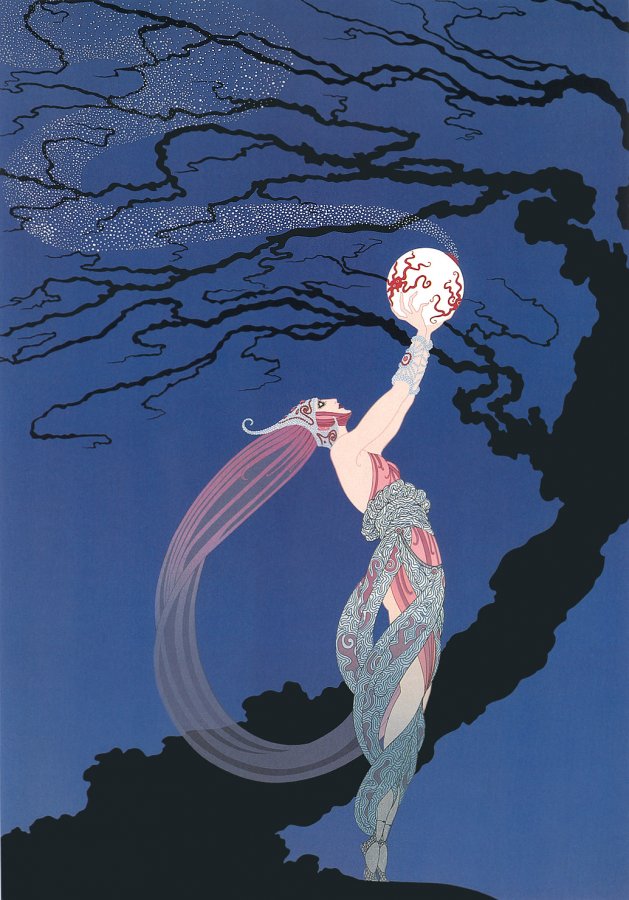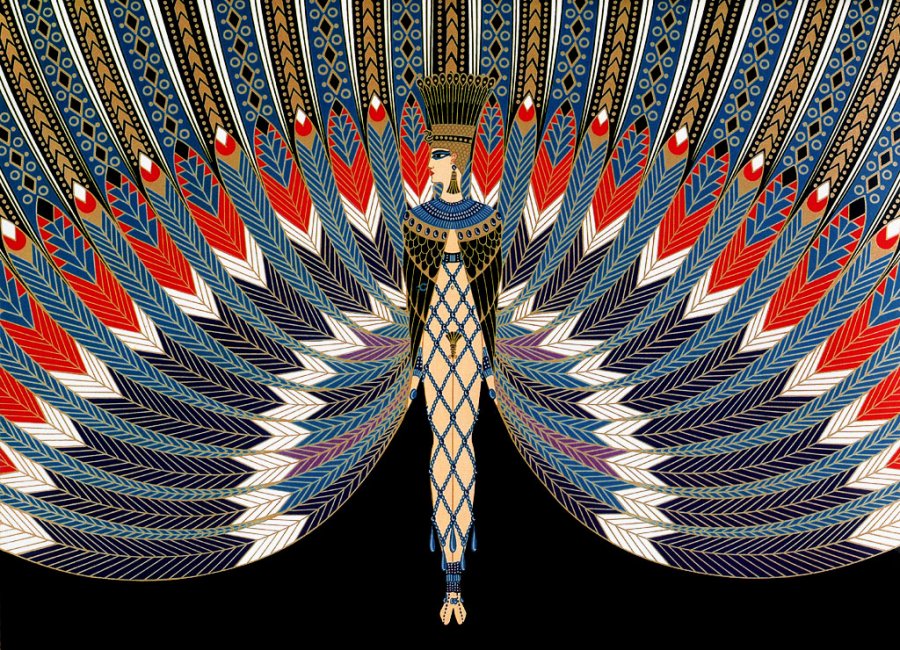The favorites in the field of fashion illustration in Europe were artists who had come from Russia as early as 10 years of the last century, among them - Roman Tyrtov.
Roman Tyrtov born in St. Petersburg on November 23 in 1892 in a noble family. As a child, he liked to draw, showed interest in the theater, attended the Academy of Fine Arts classes in St. Petersburg. In 1912 he moved to Paris and leave Russia forever. Later, when in 1923 Erte will take his parents to him to Paris, his father, Admiral Tyrtov, says: "You were right, to go to Paris."
Name Roman Tyrtova (Erte) associated with splendor characteristic of Art Deco. He became one of the most famous illustrators, designers and decorators of the twentieth century. His creative pseudonym Erte came from his initials - Roman Tyrtov. Popularity came to him even before the First World War and remained with him until his death in 1990.
He started at the Paul Poiret in the time of Russian seasons. The first theatrical costumes Erte created in 1914, at the same time he studied at the Academy R.Zhulena in Paris. Then Erte creates costumes for the play "Minaret", which then shone the famous dancer Mata Hari. Having got acquainted with Sergei Diaghilev, Erte accepted his proposal - to cooperate. He created the costumes for the ballet rooms Anna Pavlova - "Gavotte", "Seasons", "Divertimento".

Roman Tyrtov photo in 18 and 97 years
In 1915, the cover of Harper's Bazaar was first performed on the design of Erte. And from that moment the artist continued to work for the magazine, carrying pictures of clothes and covers a long time - until 1936. His magazine graphics, we can say, laid the foundations for the aesthetics of art deco. He has collaborated with fashion magazines «La Gazette du Bon Ton», «Cosmopolitan», «Dilineator», «Sketch» and «Vogue».
In 20 - 30 years Erte worked in America in the Chicago Opera. The value of his work is highly evaluated. Erte works enjoyed great success in opera, theater and ballet troupes in Paris, New York, Monte Carlo, Chicago. Erte drawing sketches and created costumes for Hollywood actresses of silent films. Here, in this work, he reflected the spirit of the Parisian fashion and Russian ballet, as well as the variety revue. His film work has an impact on other costume designers. Erte created sketches, using only their own ideas. His images are born under the influence of ancient Greek and Egyptian mythology, Indian miniatures and Russian classical art. He did not recognize the images of women with short skirts, straight silhouette that was typical of the 20s. Dress with asymmetrical neckline Erte created in 1921.
At the same time he worked and created the costumes in various Parisian music -hollah for revues and shows. He ordered it were Josephine Baker, then known Parisian cabaret. Since the 30s Erte settled in the suburbs of Paris Boulogne. To his apartment, he created the interior, which combined Russian furniture and exotic skins of leopards and zebras. He had a huge aquarium and lots of cats. Not far away lived the Prince and Princess Yusupov, from time to time they talked.
At all times of their lives Erte looked youthful and elegant. At the end of the 60s again flared interest in art Deco. On the screens out movie "Cabaret", "Death on the Nile", "The Great Gatsby", which revived the memory of the departed the 20s, and with them came out of oblivion and artists of the time - Sonia Delaunay, Tamara de Lempicka and Erte. He was already under 70, and again - take-off glory. He was again invited to draw posters in the music hall, "Folies Bergere," which he had occasion to work in 1917 to 1930 .
New York's Metropolitan Museum of Art has organized in 1967 a retrospective exhibition of Erte. Then came a lot of books about his work. His drawings have appeared on T-shirts of the German, Italian dishes, Japanese towels. His last work was the play, the Broadway musical "Stardust", which he designed when he was 97 years old. Now work Erte on the world art market is estimated very expensive - tens of thousands of dollars for a sketch. Until the last days, he not only worked, but also traveled. During a trip to the island of Mauritius Erte ill and on a private plane he was sent to Paris, where he died on April 21, 1990. The famous artist's funeral in Paris, Alexander Nevsky Cathedral. Erte's coffin was carried in his sketch. Erté buried in the cemetery of Boulogne in the family grave.







www.keralites.net        |
Posted by: martinha <ma22grupos@gmail.com>
| Reply via web post | • | Reply to sender | • | Reply to group | • | Start a New Topic | • | Messages in this topic (1) |

To subscribe send a mail to Keralites-subscribe@yahoogroups.com.
Send your posts to Keralites@yahoogroups.com.
Send your suggestions to Keralites-owner@yahoogroups.com.
To unsubscribe send a mail to Keralites-unsubscribe@yahoogroups.com.
Homepage: http://www.keralites.net














No comments:
Post a Comment